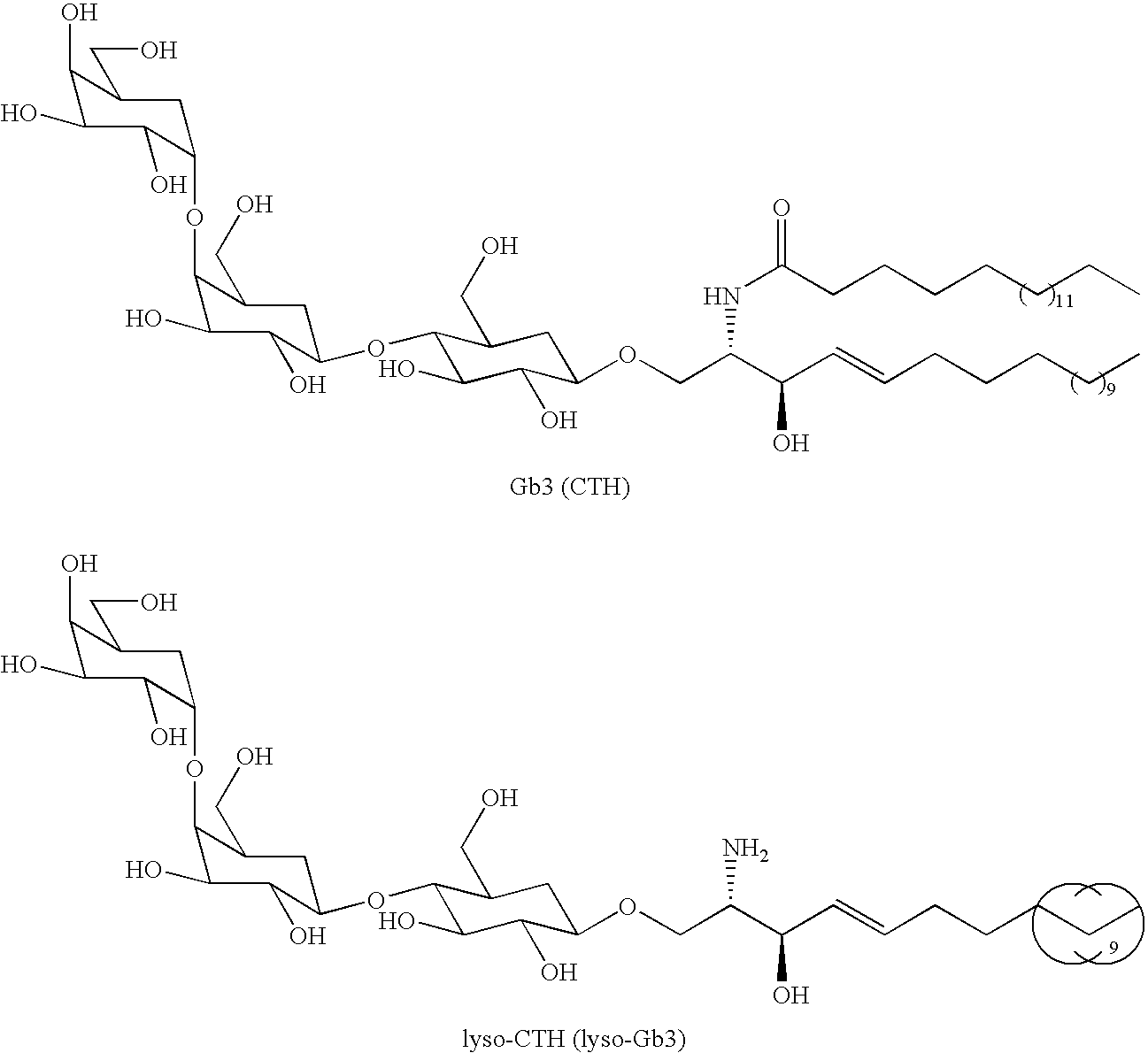Diagnostic marker for fabry disease
a technology of fabry disease and diagnostic marker, which is applied in the field of fabry disease, can solve the problems of affecting the diagnosis of fabry disease, affecting the life of patients, and affecting the quality of life of patients, and achieving the effect of reducing the risk of fabry diseas
- Summary
- Abstract
- Description
- Claims
- Application Information
AI Technical Summary
Benefits of technology
Problems solved by technology
Method used
Image
Examples
examples
Analysis
[0040]The formula below represent the structures of Gb3 (CTH) and lyso-CTH (lyso-Gb3)
[0041]An optimal extraction procedure for lyso-CTH from plasma samples was established. A double extraction was carried out, first a Bligh and Dyer extraction followed by butanol extraction.
Partitioning of lyso-CTH (% of total)upper phaselower phaseBligh and Dyer9010butanol / water992
[0042]The concentration of lyso-CTH was measured as follows:
[0043]Plasma samples were extracted by the procedure of Bligh and Dyer. The upper phase was dried under N2 and subjected to butanol / water extraction. The upper phase was dried under N2 and the residue was taken up in 250 pt methanol.
[0044]The residue, including lysosphingolipids, dissolved in methanol were derivatised on line for 30 min with o-phtalaldehyde. Analysis was performed using an HPLC system (Waters Associates, Milford, Mass.) and a Hypersil BDS C18 3μ, 150×4.6 mm reverse phase column (Alltech). Chromatographic profiles were analysed using Water...
PUM
| Property | Measurement | Unit |
|---|---|---|
| concentration | aaaaa | aaaaa |
| corneal opacity | aaaaa | aaaaa |
| opacities | aaaaa | aaaaa |
Abstract
Description
Claims
Application Information
 Login to View More
Login to View More - R&D
- Intellectual Property
- Life Sciences
- Materials
- Tech Scout
- Unparalleled Data Quality
- Higher Quality Content
- 60% Fewer Hallucinations
Browse by: Latest US Patents, China's latest patents, Technical Efficacy Thesaurus, Application Domain, Technology Topic, Popular Technical Reports.
© 2025 PatSnap. All rights reserved.Legal|Privacy policy|Modern Slavery Act Transparency Statement|Sitemap|About US| Contact US: help@patsnap.com

